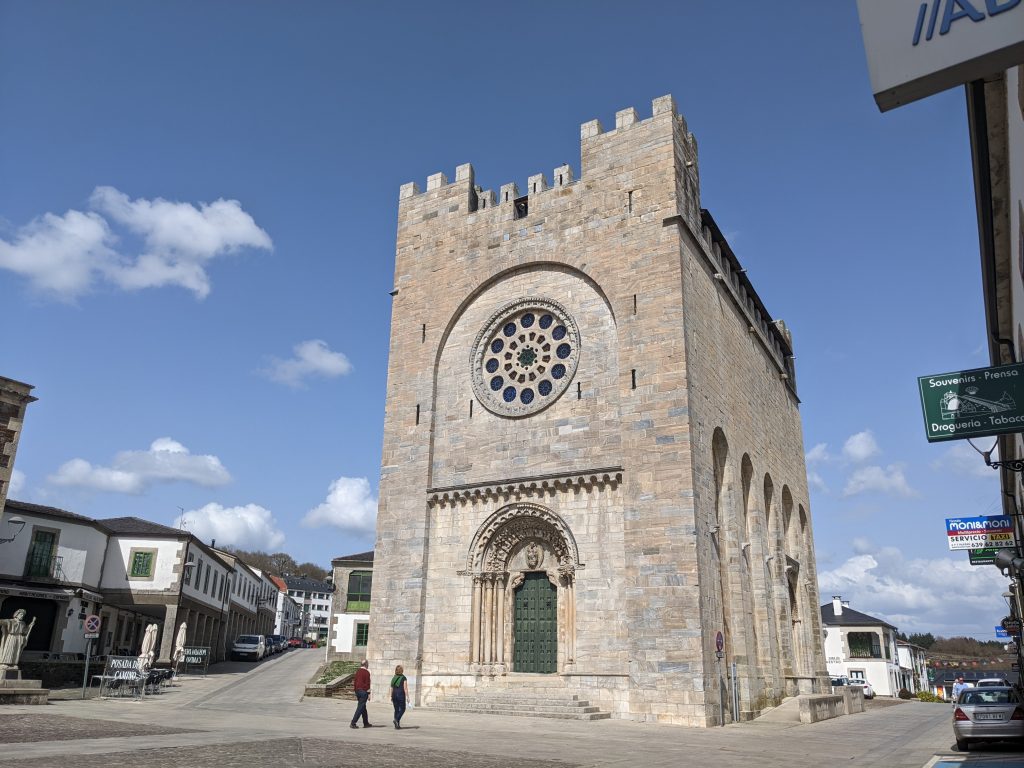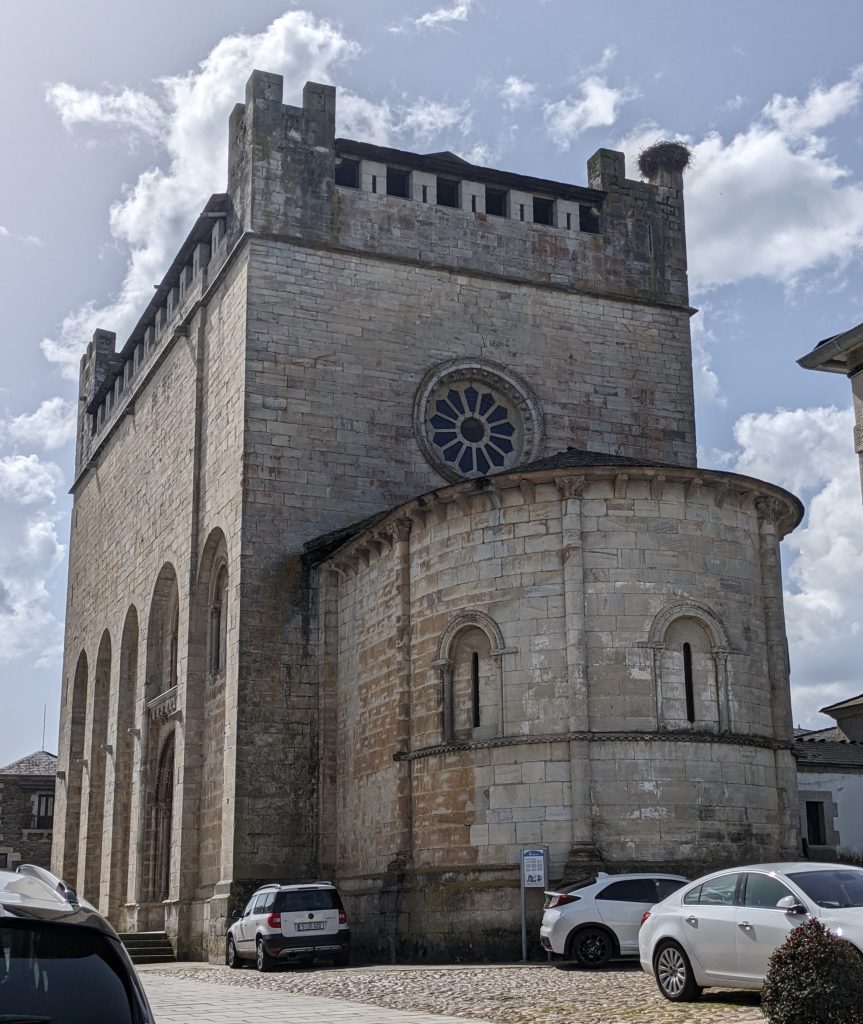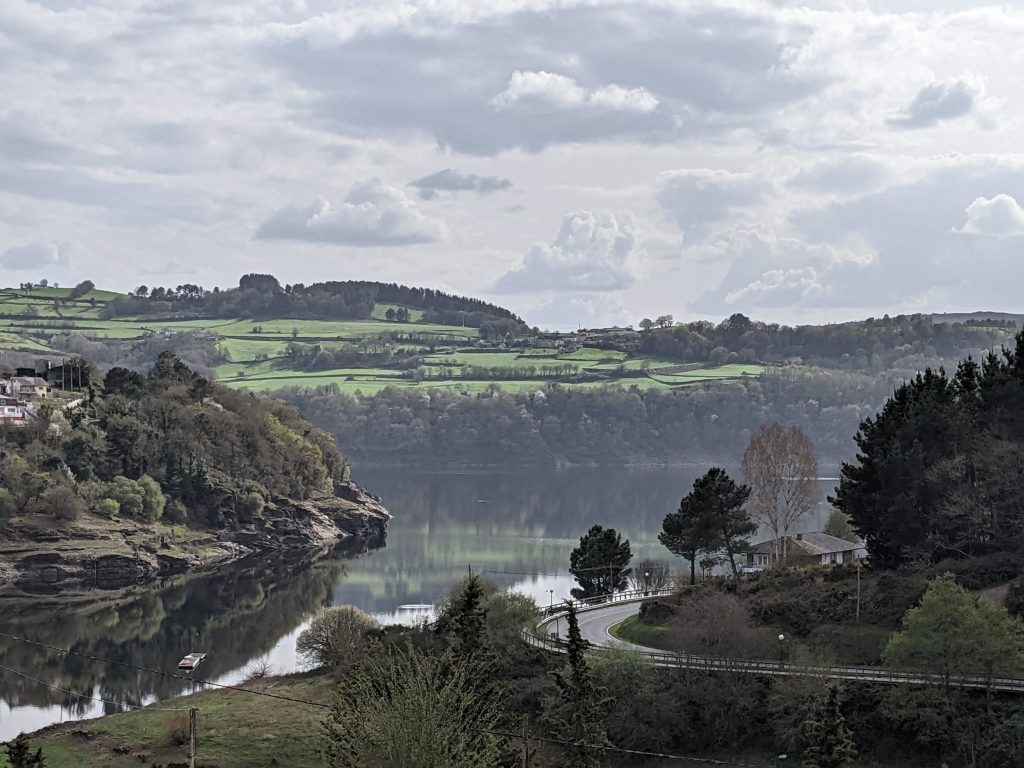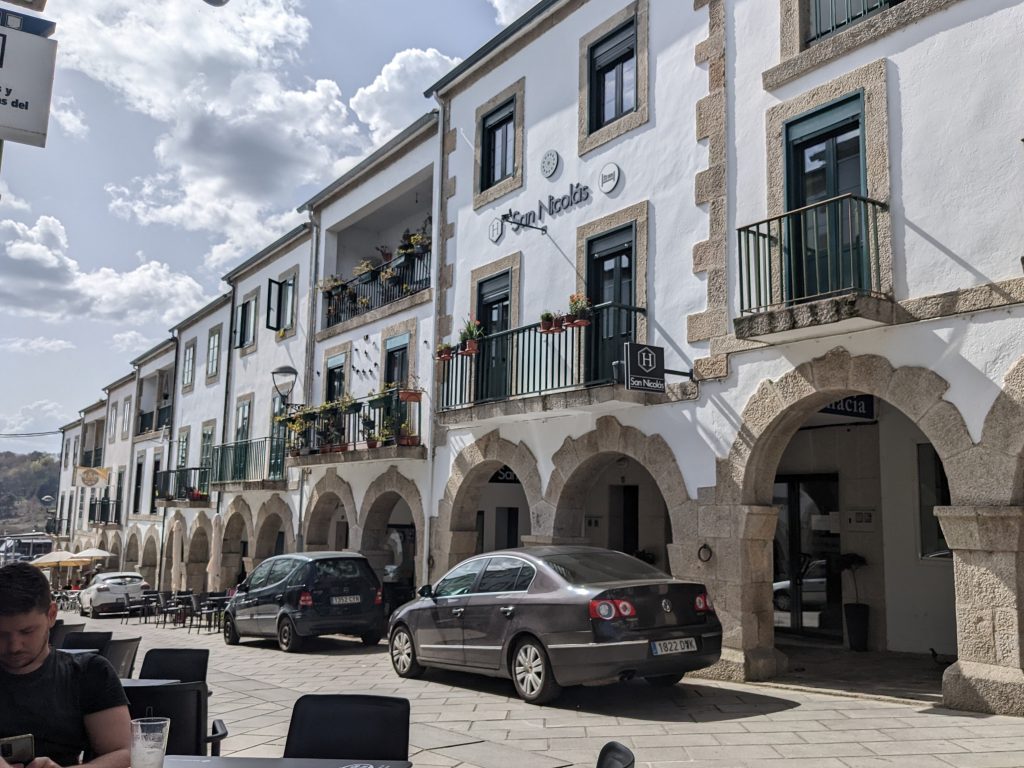
Yesterday we walked into Portomarín. It’s a lovely little town with an interesting history. Back in the 1960s, someone decided to dam a river and flood a valley to build a reservoir. The village of Portomarín was in the valley. They moved several historic buildings from the town out of the valley and up on the hill above where the reservoir was to be. Brick by brick. One was the church in the photo above. They kept a map of where every brick was to go and then reassembled it using the map. They did the same with a number of other buildings, perhaps homes as well. It is said that when the reservoir is low, you can see the remains of the old stone buildings that did not get moved. To get into Portomarín on the Camino, you walk over a long bridge that spans the reservoir. It’s a beautiful lake. We saw some people fishing way below.




Technically the back side of the church is known as the “east end.” Without actually visiting the church it is hard to tell what the purpose of this east end structure is. Given the church’s location on the Camino it is likely to contain the apse, which holds the altar, surrounded by an ambulatory. Ambulatories are common in pilgrim churches as they allowed the pilgrims to experience relics without disturbing the frequent regular services. If this church were in England, the east end would likely be an add-on known as a “lady chapel,” dedicated to the Virgin and often used for private worship.